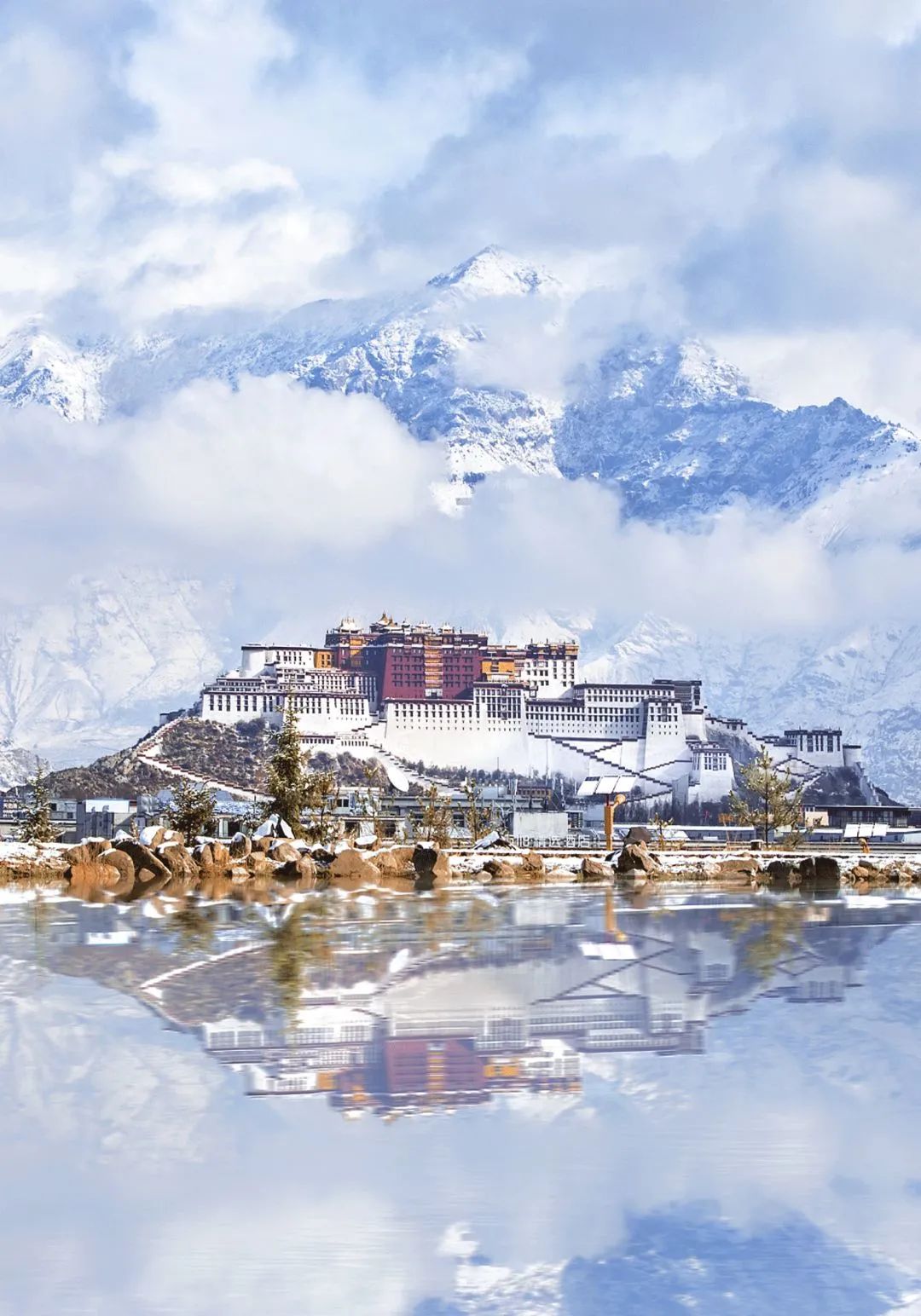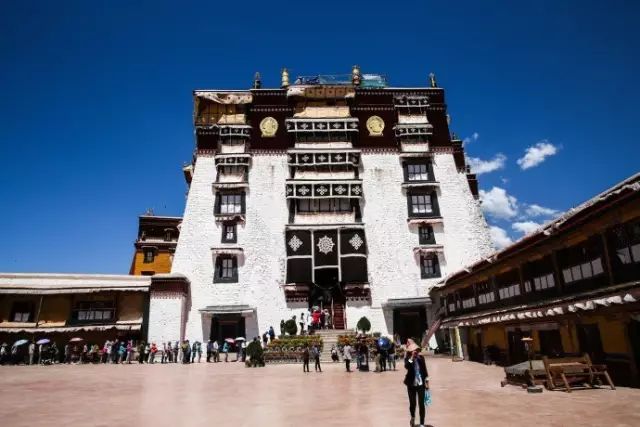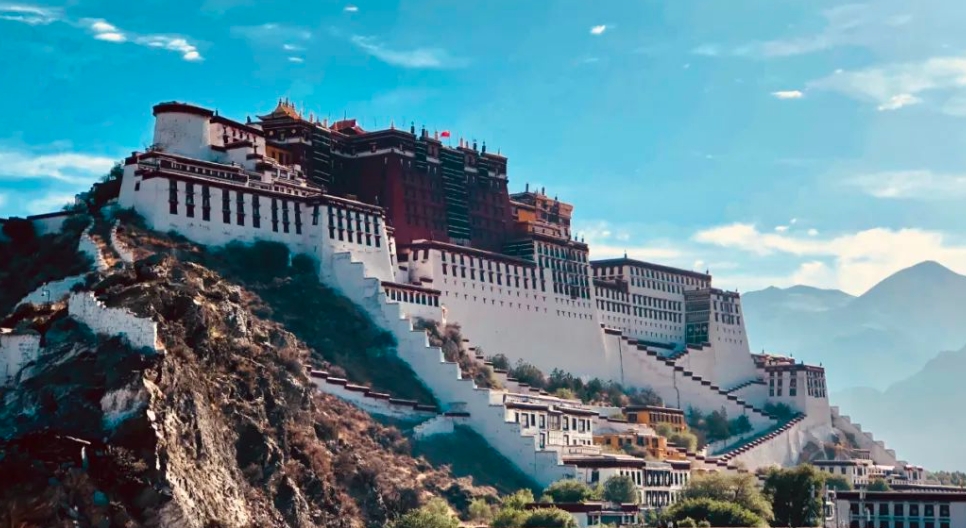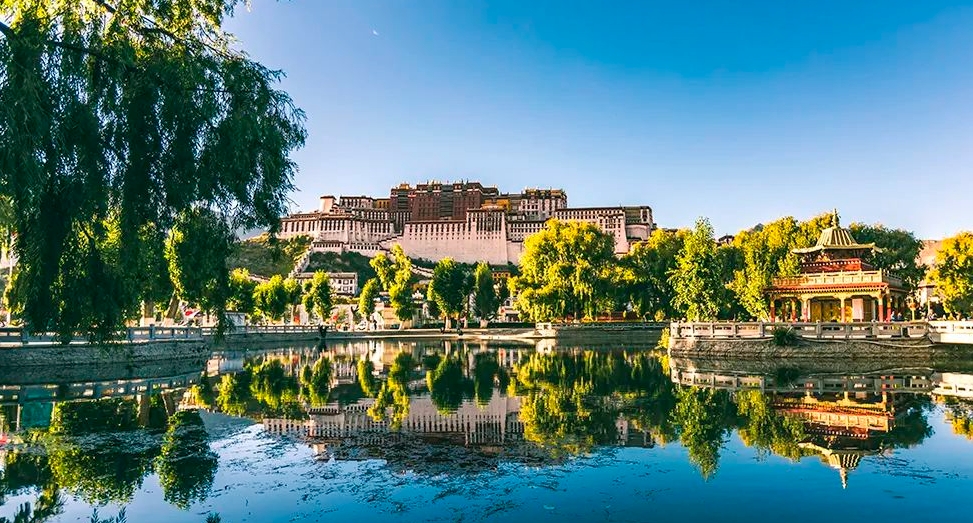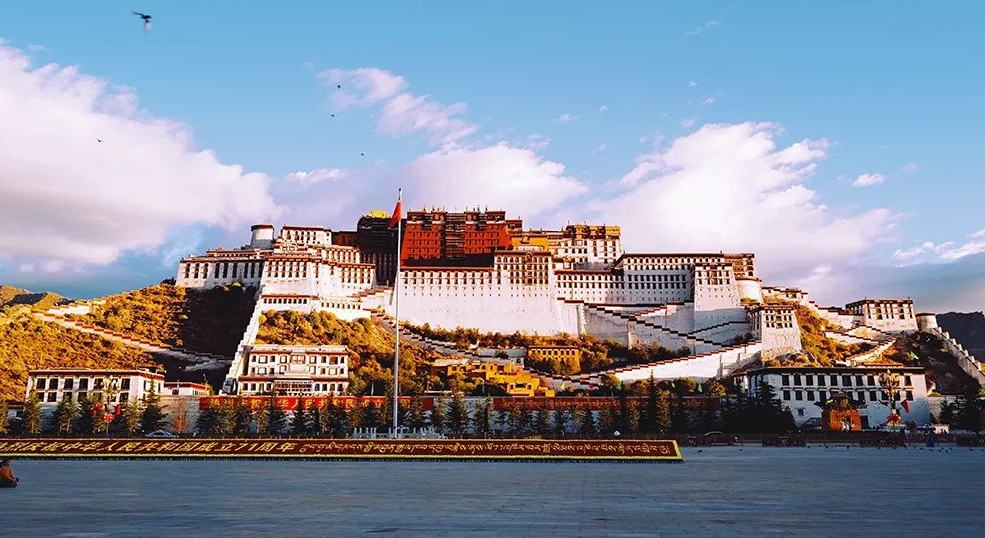I.Cultural History and Architecture of the Potala Palace
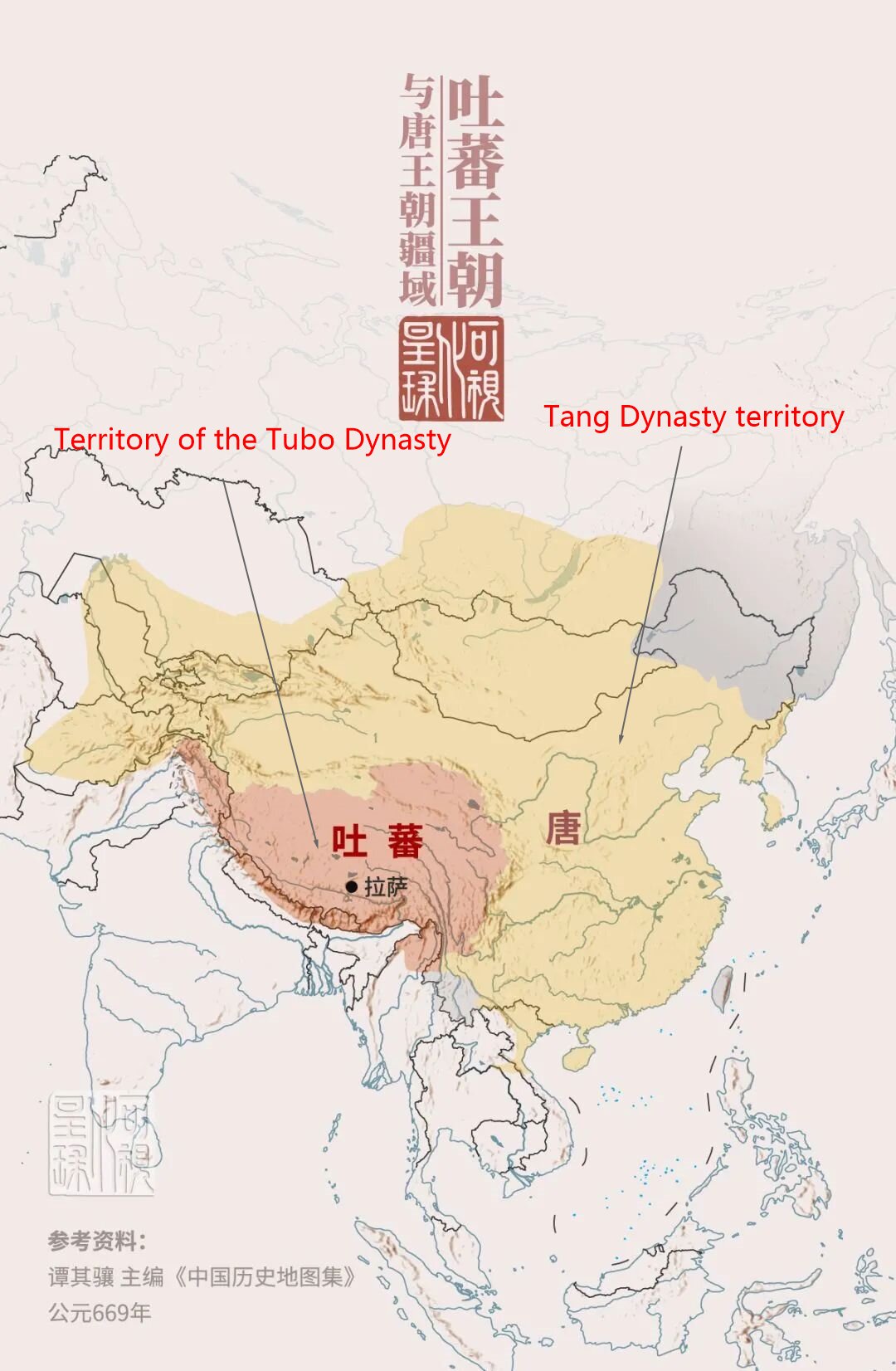
Territory of the Tubo Dynasty

The image of the Potala Palace during the period of Songtsen Gampo. Note: According to the “Catalogue of Lhasa”, this picture was originally a mural in the Jokhang Temple, but it was blackened by lamp smoke due to years
However,
For the following 800 years, the power center of Tibet continuously changed and shifted. The Potala Palace had not been rebuilt. It was not until the 17th century (1642) that after years of war, Gushri Khan, the leader of the Khoshut tribe who supported the Gelug Sect, defeated various local forces in Tibet and established the Ganden Phodrang local regime, a union of Mongols and Tibetans. Lhasa once again became the center of Tibet, and the reconstruction of the Potala Palace was extremely urgent.

red: (The scope of the local regime in Tibet in 1643)
In 1645, the foundation of the White Palace of the Potala Palace was laid. The entire project was entrusted to Desi Sonam Chokyi Pelzang, the steward of the Dalai Lama. After three years, the main project was basically completed.

The White Palace of the Potala Palace
The White Palace has a trapezoidal plane and a total of seven floors. It is the living quarters and place for handling government affairs of the Dalai Lama. On the fourth floor, there is the largest hall in the White Palace, the “Great East Assembly Hall of Perfect Solitude and Completeness.” This is where important activities such as the enthronement ceremony of the Dalai Lama are held.
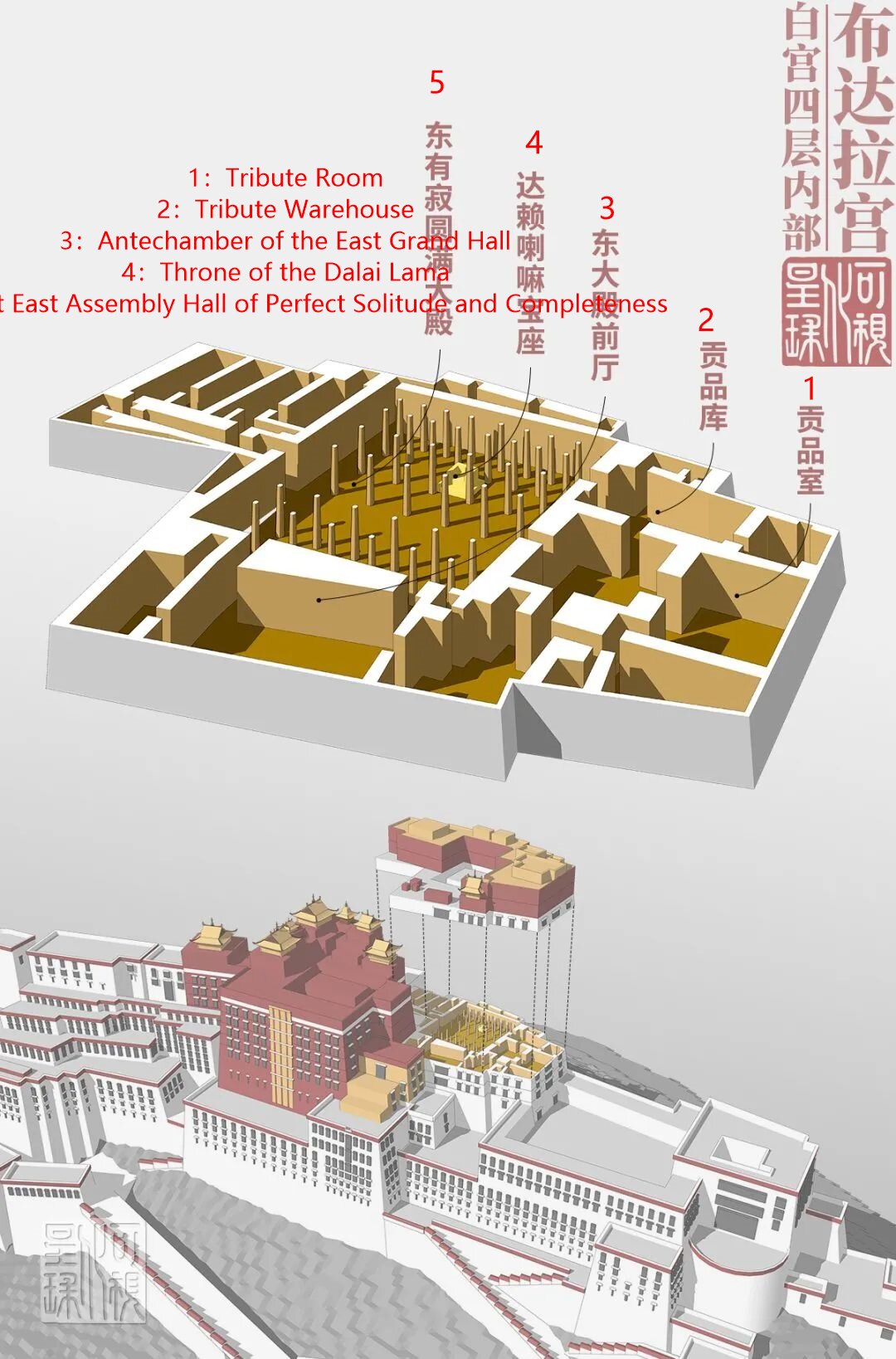
The internal layout of the fourth floor of the White Palace of the Potala Palace
Later, the Fifth Dalai Lama went to Beijing to pay homage to Emperor Shunzhi. His status was officially recognized by the Qing court. Lhasa ushered in a second construction boom.
In 1682, the Fifth Dalai Lama passed away. To place the stupa of the Fifth Dalai Lama, the Red Palace was constructed on the west side of the White Palace in 1690. It took four years to complete.

The Red Palace of the Potala Palace. After the passing of the Fifth Dalai Lama in 1682, Desi Sangye Gyatso presided over the subsequent renovation and expansion of the Potala Palace
For considerations of politics and other aspects, the construction of the Red Palace was postponed for eight years. It was not officially started until 1690. The Red Palace has a square plane and a total of nine floors. On the fifth floor, there is the largest hall in the Red Palace, the “Great West Assembly Hall of Perfect Solitude and Completeness.” The stupa of the Fifth Dalai Lama is placed here.

Interior map of the fifth floor of the Red Palace in the Potala Palace
1:The Stupa Hall of the 13th Dalai Lama
2:The Stupa Hall of the 5th Dalai Lama
3:The Hereditary Hall
4:The Great Assembly Hall of Perfect Completion in the West
5:The Hall of Vidya-Dharani
6:The Lattice Hall
In addition, there is also the imperial autograph of Emperor Qianlong, “The Initial Place of the Lotus Emerging.”
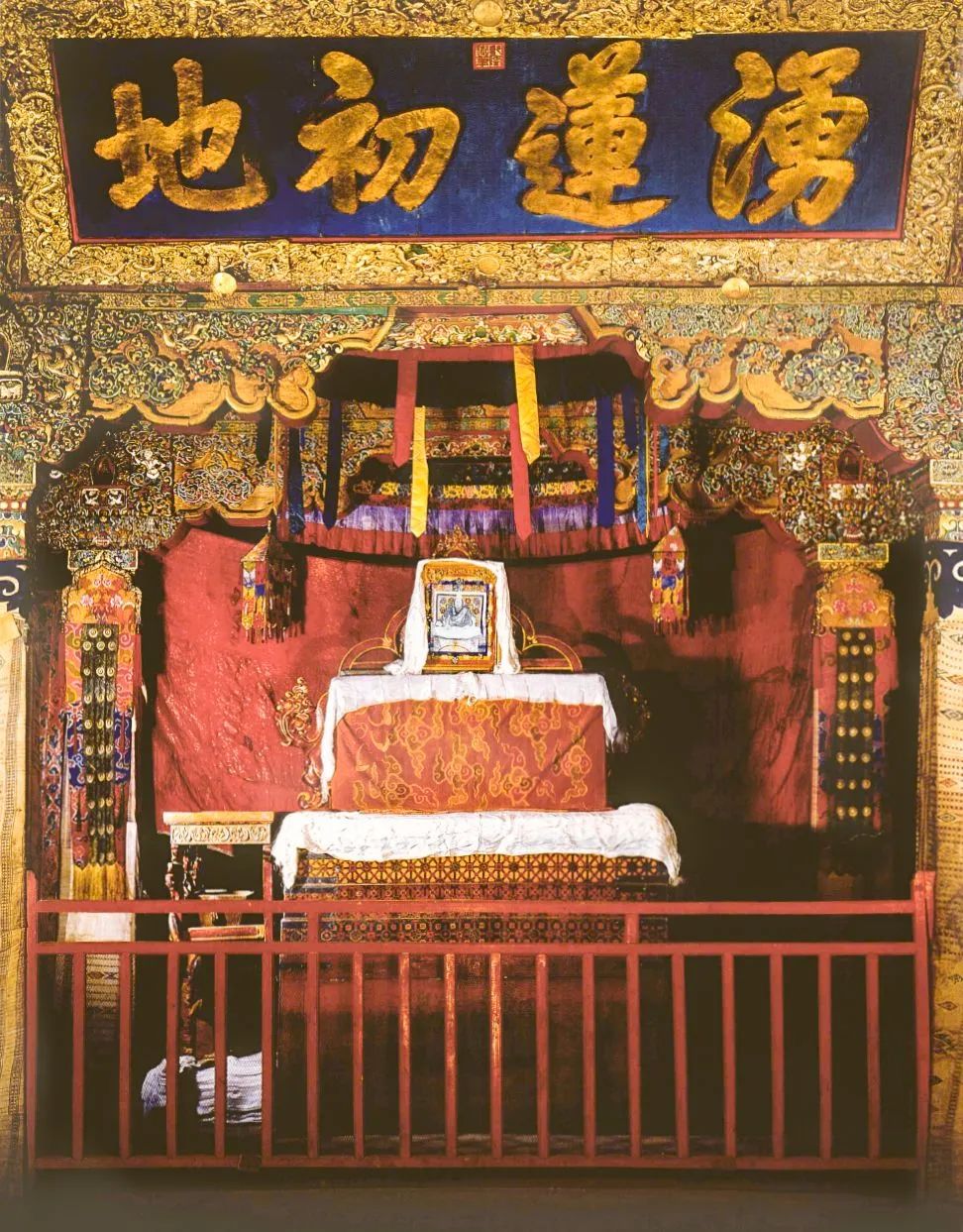
The imperial autograph of Emperor Qianlong, “The Initial Place of the Lotus Emerging”
Paintings such as “The Fifth Dalai Lama Pays Homage to Emperor Shunzhi of the Qing Dynasty.”
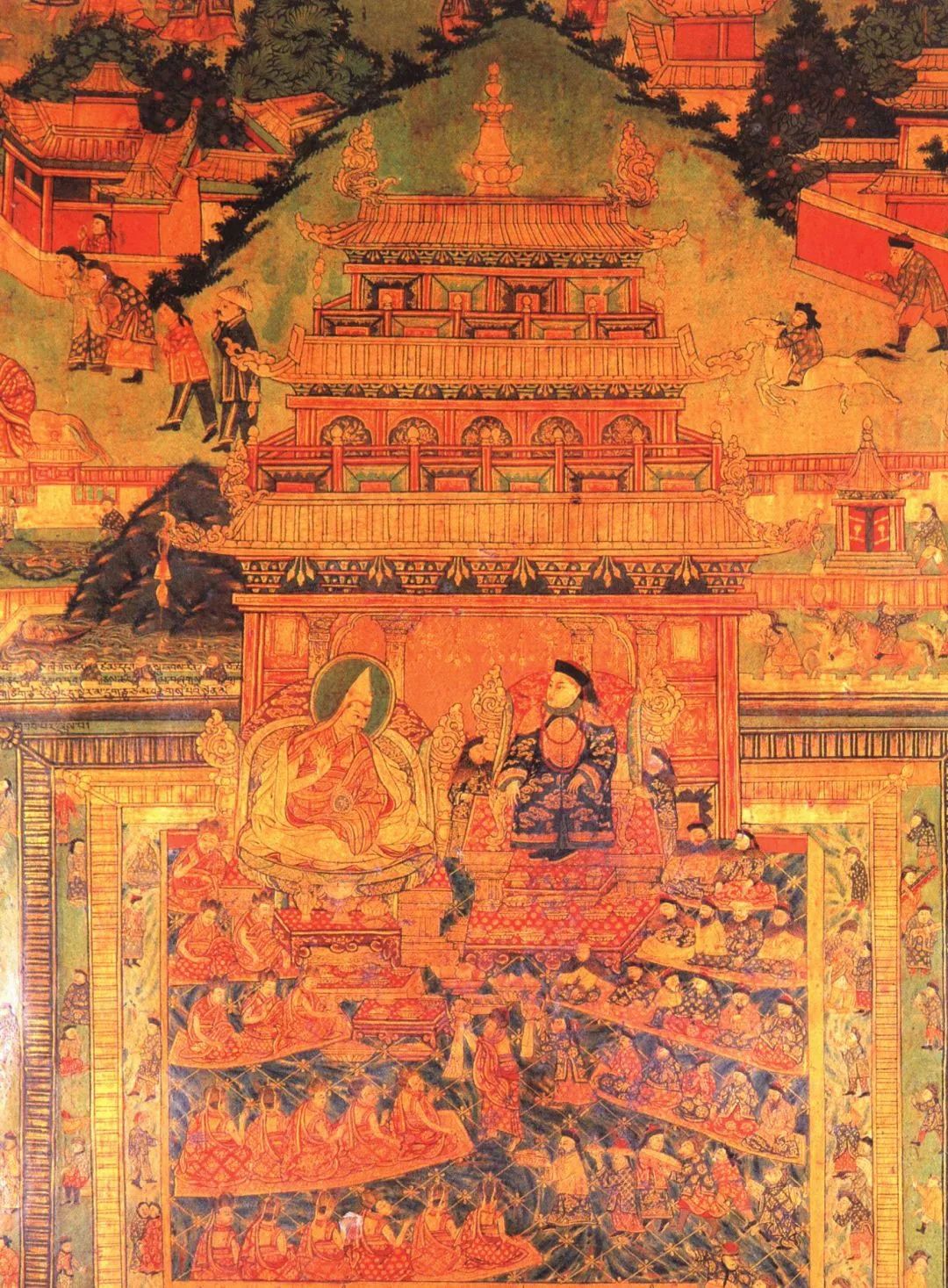
The mural of the Fifth Dalai Lama paying homage to Emperor Shunzhi of the Qing Dynasty
Since then, the Red Palace has become the place where the stupas of successive Dalai Lamas are stored. As the tallest building of the Potala Palace, the Red Palace is an incomparable classic in terms of both architectural art and religious connotations. The Red Palace is to the Potala Palace what the Potala Palace is to Tibetan Buddhism, having extraordinary significance.

A distant view of the southwest corner of the Potala Palace
Under the White Palace and the Red Palace, there is a courtyard each. On the west side of the courtyard, there are Zhacang buildings, which are used as living quarters for monks. Thus, the main body of the Potala Palace building, consisting mainly of the White Palace, the Red Palace, the courtyards, and the Zhacang buildings, was formed.

A bird’s-eye view of the west side of the Potala Palace
These are the structures and features in order:
1,Red Palace; 9,Jade Step Cellar; 17,Eastern Printing House; 2,White Palace; 10,Western Circular Fortress; 18,Eastern Palace Gate; 3,Eastern Courtyard; 11,Lower Note Summer Residence; 19,Southeast Corner Tower; 4,Western Courtyard; 12,Eastern Large Fortress; 20,Southern Palace Gate; 5,Monastic Official School; 13,Yaxi Tower; 21,Southwest Corner Tower; 6,Upper Note Summer Residence. 14,Printing House; 22,Western Palace Gate; 7,Jebum Monastery; 15,Sholpa Lekhung; 23,Back Mountain Highway; 8,Tiger’s Den Circular Path; 16,Former Tibetan Military Department; 24,Rear Circular Fortress.
Scenic Spots of the Potala Palace

The Red Palace
Located in the central position of the Potala Palace, it is the main building of the Potala Palace. The exterior wall is red. The palace adopts a mandala layout. Many scripture halls and Buddhist halls have been built around the stupa halls of successive Dalai Lamas, thus connecting with the White Palace. These are the stupa halls of successive Dalai Lamas. There are five in total, namely those of the Fifth, Seventh, Eighth, Ninth, and Thirteenth Dalai Lamas. Each hall has the same shape but different sizes. The largest stupa hall of the Fifth Dalai Lama (Tsering Lingkhyi) has three floors. It is supported by sixteen large square pillars. In the center is placed the stupa of the Fifth Dalai Lama. On both sides are the stupas of the Tenth and Twelfth Dalai Lamas.

The Golden Roof Group
It is a complex of buildings composed of the golden roofs of the stupa halls of multiple generations of Dalai Lamas. Located on the roof platform of the Red Palace, all are single-eaved hip roofs. The outer eaves are supported by wooden brackets, and covered with gilded copper tiles. On top stand three pagodas, one large and two small, glittering with golden light, extremely dazzling. The parapet on the periphery of the roof is built with a kind of deep purple-red shrub, decorated with various gold ornaments. On top of the wall stand huge gilded precious pillars and red prayer flags, reflecting a strong Tibetan style. Here, not only can you appreciate various exquisite golden roofs up close, but also overlook the general appearance of the ancient city from the railing.

Murals
On the walls of various halls (a total of 1,000 rooms) of the Potala Palace, there are murals, scroll thangkas, and wooden engravings. The fine brushwork is delicate and the lines are smooth. In the oldest existing Buddhist hall, “Chokyi Drakpa”, the murals more than 1,300 years ago are still brightly colored. History and religious themes are the main contents of the murals. In addition to Buddha statues and Buddhist stories, the well-known legend of “monkeys turning into humans” in Tibet, the Fifth Dalai Lama’s visit to Beijing to pay homage to Emperor Shunzhi, and Princess Wencheng’s entry into Tibet and other major historical events can all be found on the murals of the Potala Palace.

Treasure Gallery
It is a three-story building located in the Shol City at the foot of the front of the Potala Palace. It has a construction area of more than 2,000 square meters and a total investment of more than 10 million yuan. The exhibition of the Treasure Gallery will be divided into two parts, “Recalling History” and “Treasures in the Palace”, with eight units, totaling about 200 sets of cultural relics and photos.

Shol City
“Shol” means below. Shol City is the general term for the buildings below the Potala Palace. Here, you can see the office places set up by former lords, institutions providing living services for rulers, and the residences of monk and lay nobles, officials, as well as the residences of low-ranking clerks, craftsmen, and serfs.
II. Tickets for the Potala Palace
III. Transportation to the Potala Palace
IV. Accommodation near the Potala Palace
V. Cuisine near the Potala Palace
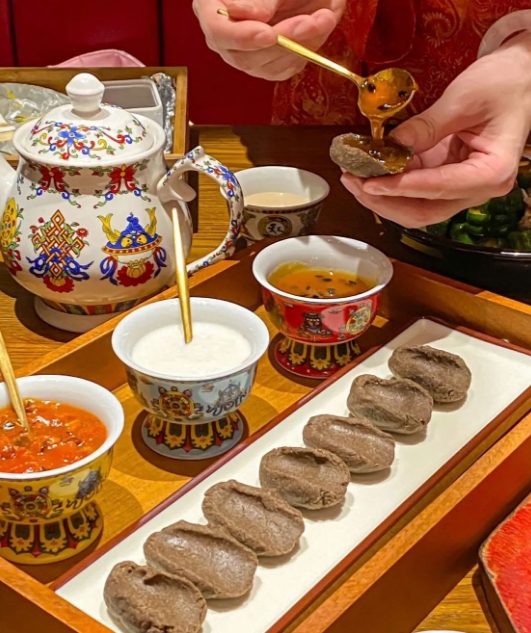
Tsampa is a characteristic snack in the Tibet Autonomous Region and also one of the traditional staple foods of Tibetan herdsmen.
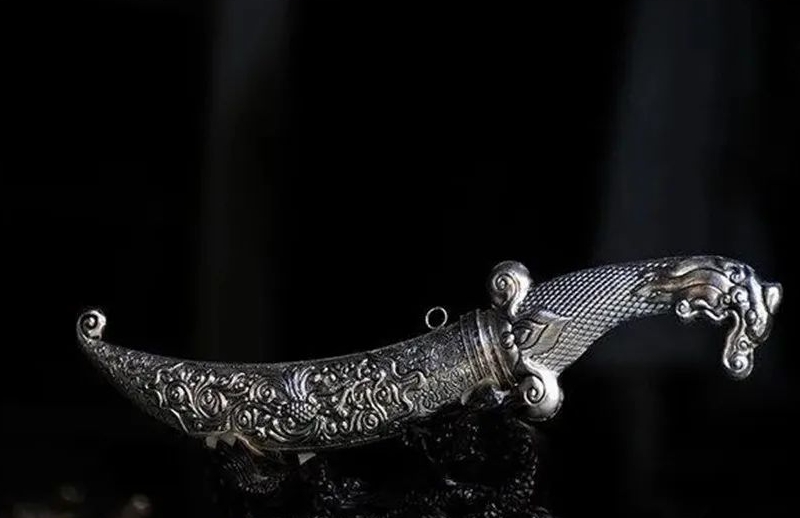
tibetan knife
VI. Festivals of the Potala Palace
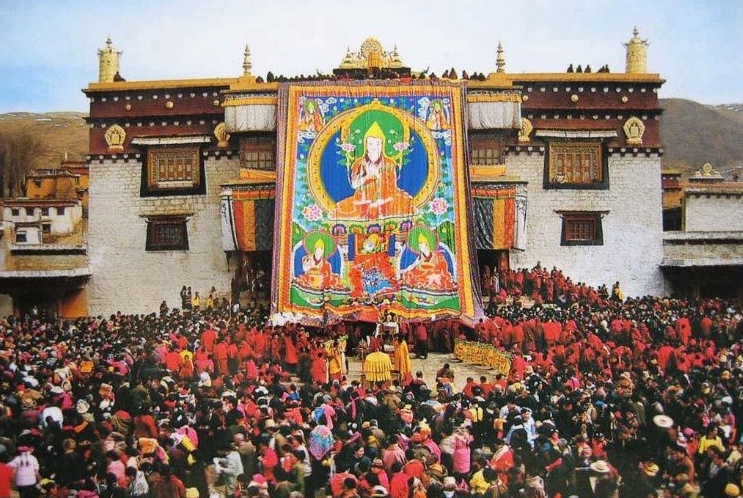
Saga Dawa Festival
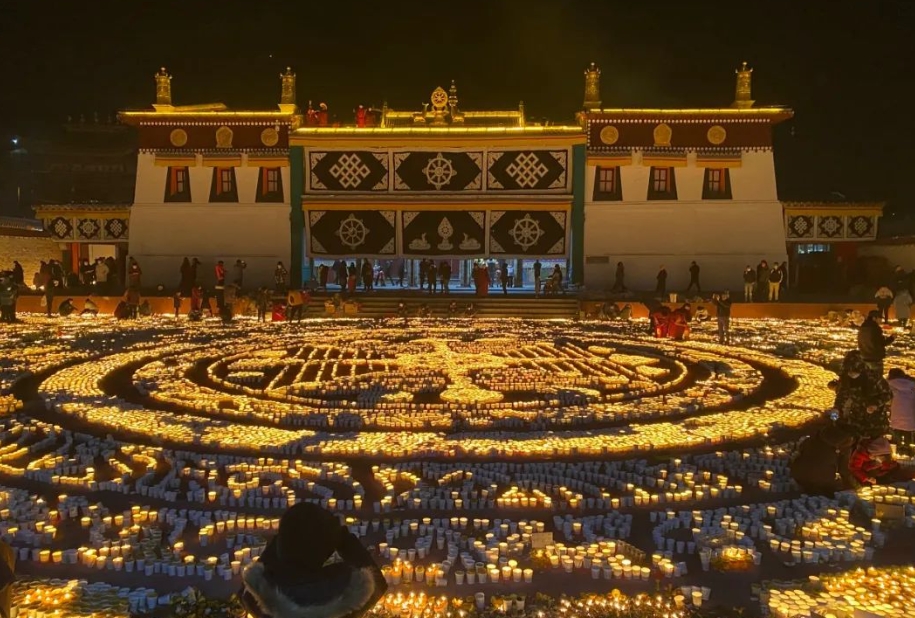
Butter Lamp Festival
VII. Travel Guide for the Potala Palace
VIII. Folk Customs and Taboos
IX. Notes for Visiting
X. Medical Care
XI. Frequently Asked Questions
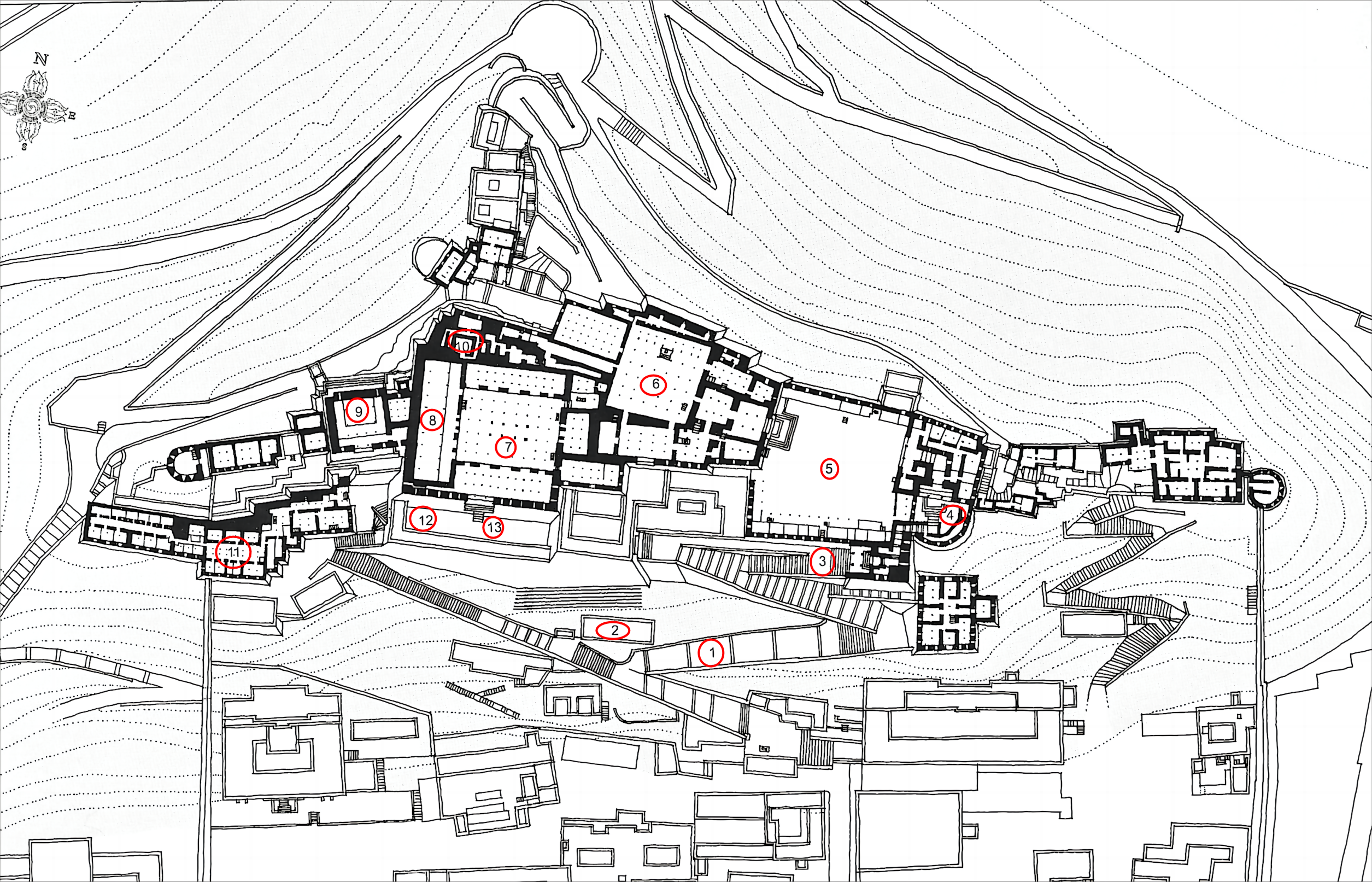
Potala floor plan 1. Outer stepped ramps 2. Storage building for giant thangkas 3. Main public entrance 4. Southern bastion 5. White Palace outer courtyard 6. White Palace Assembly Hall 7. Red Palace Main Assembly Hall 8. Funeral chapel of the 5th Dalai Lama 9. Funeral chapel of the 13th Dalai Lama 10. Cave of Songsen Gampo 11. Quarters of the Namgyal Monastery monks 12.Red Palace outer courtyard 13. Red Palace Entrance








